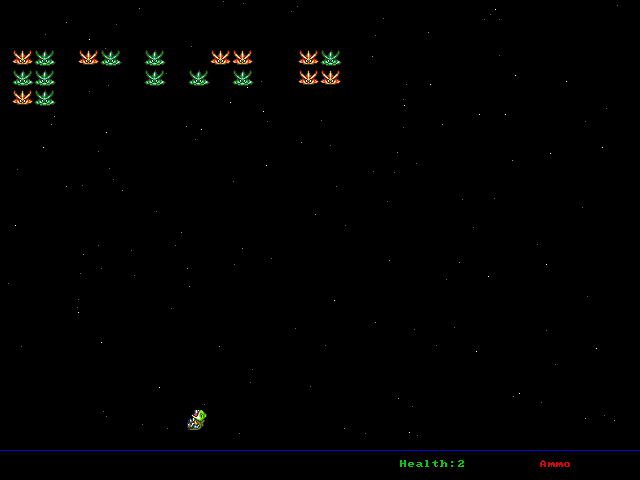Project Description
Chrono Invaders was an early 2000s passion project, combining a classic Space Invaders-style gameplay with beloved characters from Chrono Trigger. While rudimentary by today’s standards, it was a formative experience for a developer learning the ins and outs of game programming, and it showcases the valuable technical and problem-solving skills gained during its creation.
This game, developed without modern practices like object-oriented programming or efficient data structures, offers a snapshot of a developer grappling with fundamental concepts of game design. The game relied heavily on the Allegro library for graphics and input, which provided crucial exposure to handling hardware interfaces and building interactive game environments.
One of the standout features was the starfield background, a dynamic 3D-like effect achieved with simple randomization and coordinate updating, demonstrating early proficiency in visual effects. The game logic, which involved player movement, enemy spawning, and projectile tracking, helped the developer learn how to manage multiple objects in a real-time setting, despite the lack of formal structures like classes for most of the code.
Creating Chrono Invaders also involved handling game states, like the main menu, difficulty selection, and gameplay, as well as designing basic AI for enemy movement and shooting patterns. The child developer encountered practical challenges such as managing input for character selection and handling scorekeeping, both of which taught essential lessons in player interaction and state persistence. Notably, while the game uses many global variables and manual checks, this was a valuable exercise in understanding how to track and manipulate game data.
The project also introduced the developer to important debugging practices. Several logical errors, such as misaligned movement or improper boundary checks, forced a trial-and-error approach that, while slow, built resilience and a deeper understanding of how code executes in real-time applications. The developer also learned about performance constraints, as the game logic had to be efficient enough to avoid noticeable lag on early hardware.
In summary, Chrono Invaders marked the beginning of a developer’s journey, teaching invaluable lessons about game loops, input handling, graphics rendering, and player interaction—all while tackling the constraints of early 2000s hardware and libraries. While not polished or optimized by today’s standards, it reflects a deep, hands-on learning process that laid the groundwork for more advanced programming skills in the future.
Image Gallery

